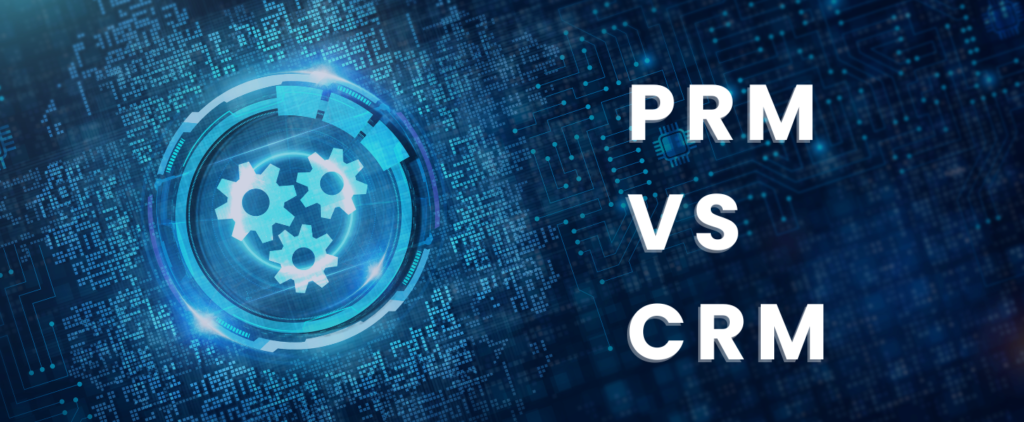Effective relationship management is essential for driving growth and success in any organization. Two key software solutions that facilitate this management are Customer Relationship Management (CRM) and Partner Relationship Management software (PRM Software). While both systems aim to enhance relationships, they serve different audiences and purposes within a business. This blog will clarify the key differences between CRM and PRM, helping you determine which solution best fits your organization’s needs.
What is CRM?
Customer Relationship Management (CRM) software is a technology designed to help businesses manage their interactions with current and potential customers. It centralizes customer data, streamlines communication, and automates various processes related to sales, marketing, and customer service. The primary objective of CRM is to improve customer relationships, enhance customer satisfaction, and ultimately drive sales growth.
Key Features of CRM
- Contact Management: CRMs store comprehensive information about customers, including contact details, demographics, preferences, and interactions.
- Sales Automation: CRM systems automate sales processes, helping sales teams manage leads, track opportunities, and forecast revenue.
- Customer Service Tools: Many CRM solutions offer customer support features, enabling businesses to handle inquiries, complaints, and service requests efficiently.
- Reporting and Analytics: CRM systems provide insights into customer behavior, sales performance, and marketing effectiveness through robust reporting tools.
What is PRM?
Partner Relationship Management (PRM) software, on the other hand, is specifically designed to facilitate and optimize relationships with channel partners. These partners can include resellers, distributors, affiliates, and other third-party organizations that collaborate with a business to sell its products or services. The primary focus of PRM is to streamline partner onboarding, enhance communication, and manage the overall partnership lifecycle.
Key Features of PRM
- Partner Onboarding: PRM systems offer tools for efficiently onboarding new partners, providing them with necessary training, resources, and access to support.
- Deal Registration: PRM software allows partners to register deals, ensuring transparency and preventing channel conflicts.
- Performance Tracking: PRM systems track partner performance metrics, enabling businesses to evaluate the effectiveness of their partnerships.
- Collaboration Tools: PRM solutions provide platforms for communication and collaboration, allowing partners to access marketing materials, product information, and training resources.

Key Differences Between CRM and PRM
Understanding the differences between CRM and PRM is crucial for selecting the right solution for your organization. Here are the primary distinctions:
1. Target Audience
- CRM: The primary audience for CRM software includes internal teams—sales, marketing, and customer service departments—who manage direct relationships with customers.
- PRM: PRM software is aimed at external partners who contribute to a company’s sales efforts, including channel managers, partner managers, and the partners themselves.
2. Core Functions
- CRM: CRM systems revolve around managing customer relationships, including tracking customer interactions, managing leads, analyzing data, and forecasting sales.
- PRM: PRM systems focus on managing the partner lifecycle, including partner recruitment, onboarding, performance evaluation, and overall relationship management.
3. Data Management
- CRM: CRM systems manage customer-related data, such as contact information, purchase history, and customer preferences.
- PRM: PRM software manages partner-related data, including partner profiles, contracts, sales performance, and communication history.
4. Communication Channels
- CRM: Communication in CRM systems primarily focuses on direct interactions with customers through emails, phone calls, and support tickets.
- PRM: PRM software facilitates communication between channel managers and partners, including sharing updates, marketing materials, and training resources.
5. Performance Metrics
- CRM: Performance metrics in CRM systems center around customer acquisition, retention rates, and overall customer satisfaction.
- PRM: PRM software focuses on partner performance metrics, such as deal registration success rates and partner engagement levels.
6. Customization and Integration
- CRM: CRM systems often offer customization options to suit different sales processes and can integrate with marketing automation tools and ERP systems.
- PRM: PRM software is designed to be customizable for various partnership models and workflows, integrating with CRM systems for seamless data flow.
7. Onboarding Process
- CRM: Onboarding in CRM systems involves training internal staff on using the system and understanding customer engagement strategies.
- PRM: The onboarding process in PRM focuses on helping new partners understand the company’s products and sales processes.
8. Goal Orientation
- CRM: The primary goal of CRM is to enhance customer satisfaction and drive sales growth through strong customer relationships.
- PRM: The goal of PRM is to optimize partner relationships to maximize revenue generation through effective collaboration.
Benefits of CRM and PRM
Benefits of CRM
- Improved Customer Relationships: CRM systems help businesses maintain organized customer data, enabling personalized interactions.
- Increased Sales Efficiency: Automating sales processes allows sales teams to focus on closing deals and nurturing leads.
- Data-Driven Insights: CRM systems provide analytics that help businesses make informed decisions.
- Streamlined Communication: Centralizing communication channels enhances collaboration among teams.
- Enhanced Customer Retention: Understanding customer behavior enables businesses to implement retention strategies.
Benefits of PRM
- Optimized Partner Relationships: PRM software facilitates effective partner interactions.
- Improved Partner Onboarding: Streamlined onboarding processes ensure new partners have access to necessary resources.
- Performance Monitoring: PRM software tracks partner performance, identifying high performers and areas for improvement.
- Increased Revenue Opportunities: Empowering partners with the right tools drives sales and revenue growth.
- Enhanced Collaboration: PRM systems foster communication and collaboration among partners.

Choosing the Right Solution
When deciding between CRM and PRM software, consider your organization’s specific needs, goals, and target audiences. Here are some factors to help you choose the right solution:
1. Business Model
Assess whether your business primarily relies on direct customer sales or a network of channel partners. This will guide your decision on which software to prioritize.
2. Sales Strategy
Evaluate your sales strategy. If your focus is on nurturing customer relationships, a CRM may be sufficient. For businesses aiming to expand reach through partnerships, a PRM is essential.
3. Integration Needs
Consider the need for integration. If you already have a CRM, look for PRM software that integrates seamlessly to ensure smooth data flow.
4. Scalability
Choose a solution that can scale with your business. As your partner network or customer base grows, you’ll need a system that can accommodate increased complexity.
5. Budget Considerations
Finally, assess your budget. Both CRM and PRM solutions offer valuable features, so evaluate the total cost of ownership and the return on investment.
In summary, CRM and PRM software serve distinct purposes in managing relationships within a business ecosystem. CRM focuses on direct customer interactions, while PRM optimizes partnerships with channel partners. By understanding these differences and evaluating your organization’s needs, you can make informed decisions about which solution will drive your business forward.
Both CRM and PRM play vital roles in enhancing relationship management and driving growth. By leveraging the strengths of both systems, businesses can create a comprehensive approach to relationship management that fosters success in today’s competitive marketplace.
